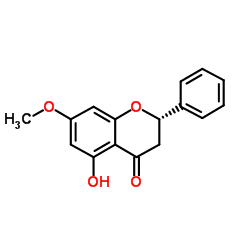Effects of pinostrobin on estrogen metabolism and estrogen receptor transactivation.
J C Le Bail, L Aubourg, G Habrioux
Index: Cancer Lett. 156 , 37-44, (2000)
Full Text: HTML
Abstract
The interaction between the estrogen receptor and 5-hydroxy-7-methoxyflavanone (pinostrobin) was studied in the presence or absence of estradiol or dehydroepiandrosterone sulfate (DHEAS), respectively, using a stably transfected human breast cancer cell line (MVLN). We also evaluated its action on the proliferation in estrogen-dependent (MCF-7) human breast cancer cells in the same conditions than the estrogen receptor assay. On the other hand pinostrobin was evaluated for their effects on the human placental aromatase, 3beta-hydroxysteroid dehydrogenase Delta(4)/Delta(5) isomerase and 17beta-hydroxysteroid dehydrogenase activities. Pinostrobin did not possess antiestrogenic activity but presented anti-aromatase activity and decreased the growth of MCF-7 cells induced by DHEAS and E(2). This study provides particularly evidence of the potential biological interest of pinostrobin among the flavonoids.
Related Compounds
| Structure | Name/CAS No. | Molecular Formula | Articles |
|---|---|---|---|
 |
Pinocembrin-7-methyl ether
CAS:480-37-5 |
C16H14O4 |
|
Phloroglucinols from anti-microbial deposit-resins of Austra...
2015-01-01 [Phytother Res. 29(1) , 48-58, (2015)] |
|
Study on the constituents of Mexican propolis and their cyto...
2010-04-23 [J. Nat. Prod. 73 , 623-7, (2010)] |
|
Cytotoxic flavonoids from the leaves of Cryptocarya chinensi...
2010-09-24 [J. Nat. Prod. 73 , 1470-5, (2010)] |
|
Structure-activity relationships of flavonoids as inhibitors...
2011-03-15 [Bioorg. Med. Chem. 19 , 2090-102, (2011)] |
|
Antimalarials from nature.
2009-05-01 [Bioorg. Med. Chem. 17 , 3229-56, (2009)] |